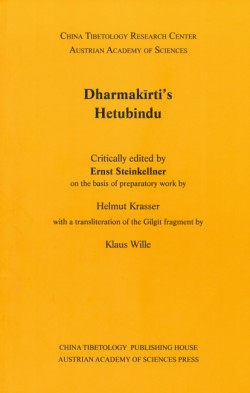
The Hetubindu, composed by the Buddhist philosopher and logician Dharmakīrti during his middle period (around 600 CE), develops further, with succinct formulations and elaborations on the formal structures and essential elements, his theory of logical reason and inference as he had presented it in the work of his youth, which later became the first chapter, on inference, of the Pramāṇavārttika together with an explanatory Vṛtti, and was refined in the second chapter of his Pramāṇaviniścaya. In the Hetubindu, a treatise of pure logic, he further enriched his ideas in three digressions: an analysis of his teacher Īśvarasena’s theorem of the reason with six characteristics, an epistemological examination of negative cognition and a demonstration of its applicability as a logical reason, and an extensive presentation of the possibilities, by investigating causality, for determining the nexus in the case of the proof of the momentariness of all entities. The original Sanskrit text of the Hetubindu was still considered lost when, in 1967, Ernst Steinkellner critically edited its Tibetan translation, reconstructed a Sanskrit text on the basis of fragments, various testimonies and Arcaṭa’s commentary extant in Sanskrit, and prepared an annotated German translation. But nearly two decades later, in 1985, a unique Sanskrit manuscript of the text was discovered by Luo Zhao at the Potala in Lhasa. After almost another two decades, through a cooperation agreement between the Austrian Academy of Sciences and the China Tibetology Research Center, Beijing, a photographic copy of this manuscript could finally be accessed in 2004. The editorial work of this Sanskrit manuscript was entrusted to Helmut Krasser, who prepared a first transliteration and a preliminary critical edition. Regrettably he was unable to finish the task due to a lengthy grave illness; he passed away in March 2014. Steinkellner subsequently revised Krasser’s work, provided an analytical survey and an introduction. Thanks to Klaus Wille he was also able to add, together with the latter’s transliteration, photos of the Gilgit fragment, the oldest testimony of this jewel of Indian logical thought.
…
2016,
978-3-7001-7960-7
IX+123 Seiten,
23,9x15,7cm, broschiert